Foot & Ankle
Achilles tendon rupture
The Achilles tendon is a cord-like band that connects the muscles of your lower leg (calf) to your heel.
Achilles tendon facilitates walking by helping to raise the heel off the ground.
Achilles tendon tear happens from a sudden stretching of the tendon or a direct hit onto the tendon.
You are more likely to develop this condition if you:
- Are a runner.
- Play sports that involve sprinting, running, or jumping.
- Play contact sports.
- Have a weak Achilles tendon. Tendons can weaken from aging, repeat injuries, and chronic tendinitis.
Patient presents with h/o sudden stabbing pain above the heel at the time of injury with a loud crack or pop sound. Patient will experience difficulty or weakness in heel raising. On clinical examination, patient presents with palpable gap or defect. Patient gives a characteristic positive calf muscle squeeze test or Thompson’s test. Non-operative treatment involves keeping the ankle in rigid immobilisation in a cast or functional bracing to keep two torn ends together to assist healing. The foot is gradually brought from equinus to neutral position over a period of 8 to 12 weeks followed by weight bearing if permitted. Surgical management depends on the stump and gap length of the rupture. Different surgical options involves v-y advancement, gastrocnemius fascial turndown flap, plantaris tendon removal, and Achilles tendon scrapping or flexor halluces longus tendon transfer.
Ankle ligament tear
Ligaments are strong, fibrous tissues that connect bones to other bones across the joint. They provide stability to the joint. Ankle joint has multiple ligaments namely Anterior talofibular ligament (ATFL), Calcaneofibular ligament (CFL),posterior talofibular ligament on the outer side and deltoid ligament on the inner side. The severity of ligament injury can range minor sprains to complete tears. Complete tears of the ligament cause unstable ankle.
The cause for ligament tear is twisting injury to the foot or ankle. The lateral ligaments (outer side of ankle) are by far the most commonly injured ligaments in an inversion injury where the ankle tilts inward.
Symptoms include swelling and painful ankle joint. Complete tear cause give way sensation and tendency for repeated twisting injuries because of instability. The diagnosis is usually made by examination of the ankle and X-rays to make sure that the ankle is not fractured. A physical examination is used to determine which ligament has been injured.
Treatment- Most ankle sprains can be treated without surgery. Even a complete ligament tear (Grade 3) will heal without surgical repair if it is immobilized and rehabilitated appropriately. Surgery is reserved for injuries that fail to respond to nonsurgical treatment, and for patients who experience persistent ankle instability and pain after months of rehabilitation and nonsurgical treatment.
Heel pain/ heel spur
A heel spur is a calcium deposit causing a bony protrusion on the underside of the heel bone. Heel spurs are often caused by strains on foot muscles and ligaments, stretching of the plantar fascia, and repeated tearing of the membrane that covers the heel bone. Heel spurs are especially common among athletes whose activities include large amounts of running and jumping. Although heel spurs are often painless, they can cause heel pain. They are frequently associated with plantar fasciitis, a painful inflammation of the fibrous band of connective tissue (plantar fascia) that runs along the bottom of the foot and connects the heel bone to the ball of the foot. Heel spurs can be associated with intermittent or chronic pain -- especially while walking, jogging, or running if inflammation develops at the point of the spur formation. Many people describe the pain of heel spurs and plantar fasciitis as a knife or pin sticking into the bottom of their feet when they first stand up in the morning, a pain that later turns into a dull ache. They often complain that the sharp pain returns after they stand up after sitting for a prolonged period of time. Non-surgical treatments for heel spurs include stretching exercises, shoe modifications, taping or strapping to rest stressed muscles and tendons, shoe inserts or orthotic devices, physiotherapy and nights splints. Over the counter medications such as acetaminophen or ibuprofen help to relieve the pain. In some cases, injection with a corticosteroid may be done to relieve inflammation in the area. If conservative treatment fails to treat symptoms of heel spurs after a period of 9 to 12 months, surgery may be necessary to relieve pain and restore mobility. Surgical techniques include release of the plantar fascia or removal of the spur.
Bunion (hallux valgus)
- Hallux valgus also known as a bunion, is one of the most common forefoot deformities. It manifests with the proximal phalanx deviating laterally and the first metatarsal head deviating medially and due to the adduction of the first metatarsus.
- Precise etiology is not fully understood. HV tends to occur more commonly in women than in men, with a ratio as high as 15:1 in one study, and occurs more in those who wear tight shoes or heels.
- Patient presents with pronation and lateral deviation of the proximal phalanx of the great toe. The 1st metatarsal head tends to shift medially often becoming red and painful.
- Patients typically present with a chronic onset of sharp or deep pain at the MTP joint that is exacerbated by ambulation. Another relatively common presentation is tingling or burning pain at the dorsal part of the deformity. These symptoms can cause significant morbidity, often limiting physical activities.
- On clinical examination, position of the hallux, with respect to the second digit is assessed. The hallux can be under-riding, overriding, or without contact. The lateral deviation of the MTP may represent subluxation at the MTP joint.
- Non-operative treatment include shoe modification, orthosis, analgesics, ice pack therapy, medial bunion pads and stretching. When not responding to conservative treatment, surgery is advised which involves osteotomy, arthroplasty, arthrodesis and soft tissue procedures.
Flat foot
Adult acquired flatfoot (AAFD), first described as posterior tibial tendon dysfunction (PTTD), is a complex pathology defined by the collapse of the medial longitudinal arch of the foot with continued progressive deformity of the foot and ankle. Flat foot is a multifactorial process involving PTTD due to obesity, relative hypovascularity of the tendon, previous trauma, corticosteroid injection, neuromuscular conditions, and diabetes.
Deficiency of the posterior tibial tendon leads to an unstable transverse tarsal joint and forefoot abduction, allowing unopposed action of the peroneus brevis. Lateral deviation/abduction of the forefoot displace the calcaneal tendon laterally. Failure of spring and deltoid ligaments result in the valgus deformity of hindfoot in later stages.
On clinical examination medial longitudinal arch and posterior tibial tendon dysfunction are assessed. Forefoot and hindfoot is checked for the extent of deformity. Weight bearing radiographs are gold standard for evaluation of flat foot.
First line treatment/ conservative treatment involves orthotic devices, such as low-articulating ankle-foot orthosis, cast-boot walkers, and other ankle-foot orthoses in conjunction with NSAID therapy and physical therapy.
Surgical treatment is based on the degree and extent of deformity which involves posterior tibial tendon tenosynovectomy, debridement or FDL tendon autograft in mild cases. In later stages osteotomy, arthrodesis and ankle replacement +/- deltoid repair is done.
Hammer toes
Hammertoe and mallet toe are foot problems that cause a bend in a toe or toes. Wearing shoes that don't fit well can cause hammertoe and mallet toe. Other causes are foot injury and certain illnesses, such as diabetes or imbalance in the toe muscles. Often the cause isn't known. Symptom include pain from wearing shoes, difficulty moving the affected toe, toe stiffness, callus or corn formation due to rubbing against shoes or against the ground.
To diagnose hammertoe or mallet toe, a health care provider inspects the foot. X-rays can help show the bones and joints of the feet and toes. But they're not always needed.
For toes that can still unbend, roomier footwear and shoe inserts, called orthotics, or pads might give relief. Inserts, pads or taping can move the toe and ease pressure and pain. Exercises are suggested to stretch and strengthen toe muscles. These might include using toes to pick up marbles or scrunch a towel. If these treatments don't help, surgery is advised.
The surgery can release the tendon that's keeping the toe curled up. Sometimes, the surgeon also removes a piece of bone to straighten the toe.
Ingrown toenails
Ingrown toenails are a common condition in which the corner or side of a toenail grows into the soft flesh. The result is pain, inflamed skin, swelling and, sometimes, an infection. Ingrown toenails usually affect the big toe. Symptoms include pain, tenderness, inflamed skin and swelling. Causes include wearing tight fitting shoes, cutting nails not straight across or cutting too short, injury or having curved toenails. Complications can be especially severe if you have diabetes, which can cause poor blood flow and damaged nerves in the feet. So a minor foot injury, a cut, scrape, corn, callus or ingrown toenail may not heal properly and can get infected. This condition can be diagnosed based on the symptoms and examination of nail with surrounding skin. Treatment include lifting the nail and placing cotton, dental floss or splint under it; taping the nail; placing gutter splint under the nail and partially removing the nail. If there is repeated problem involving same toenail, removal of nail along with the underlying tissue (nail bed) is advised.
Ankle osteoarthritis
The ankle joint consists of two synovial joints, namely the tibiotalar and the subtalar joint. In both joints, osteoarthritis can be diagnosed in the medial and lateral compartments.
There are 2 types of osteoarthritis: primary (unknown cause) and secondary. Compared with the knee and hip joints, there is a substantially lower rate of primary ankle OA due to unique anatomic, biomechanical and cartilage characteristics of the ankle. There is also a relatively higher cartilage resistance in the ankle, which might protect it from degenerative changes leading to primary OA. Secondary ankle OA can be caused by trauma, metabolic disease, congenital malformations, premature menopause, etc.
In most cases ankle OA is due to chronic chondral damage of ankle joint cartilage seen in patients with old history of fractures of malleoli, tibial plafond, talus or ligament injuries.
Symptoms include slow and progressive pain, aggravated on exertion and relieved on rest. Local examination shows mild swelling, crepitus, joint line tenderness, decreased range of motion.
Non-surgical management include anti-inflammatory medications, intraarticular injection of corticosteroids, hyaluronic acid. It has to be combined with physiotherapy and weight reduction in heavy patients. Non responding patients can be advised for surgical treatment in the form of arthroscopic debridement, fusion of the joint (arthrodesis) or replacement of the joint.
Diabetic foot problems
Diabetic foot complications include non-healing ulcers and Charcot arthropathy (deformed foot). The causes for these problems are the nerve damage and reduced blood supply due to arterial blockage in poorly controlled diabetic patients. In general, the risk of diabetes-related foot complications can be lowered by keeping the blood sugar in the goal range and by examining the feet regularly.

Dr. Manuj Wadhwa
Chairman & Executive Director- Elite Institutes of Orthopedics & Joint Replacement
- Ojas Hospitals, Panchkula
- Ivy Hospitals, Punjab
Awards Wining Doctor
- 2 Times World Book of Records
- 7 Times Limca Book of Records
Let’s Get In Touch

Sector 22, Panchkula
09:00 am - 04:00 pm
(By Prior Appointments)

Sector 71, Mohali
09:00 am - 04:00 pm
(By Prior Appointments)
Email us
Give us a Call
Book An Appointment








